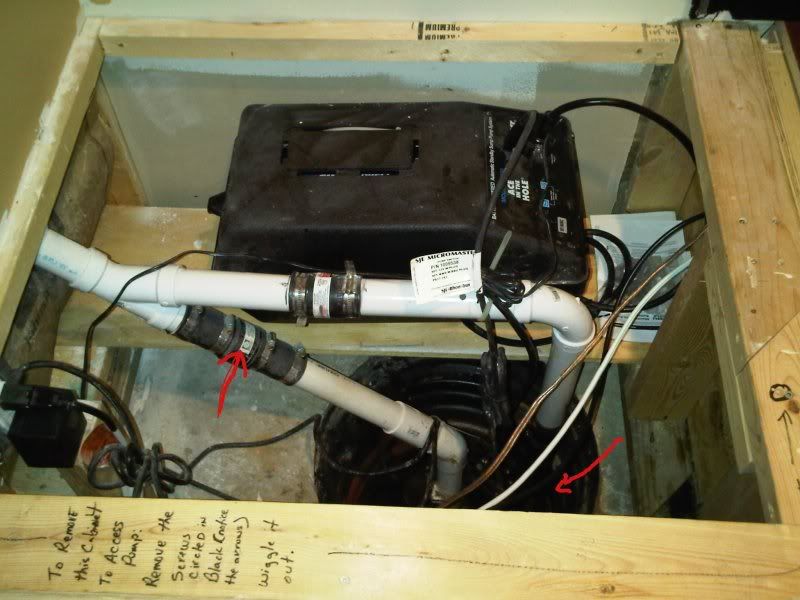I have an Ace in the hole that works (as tested outside using a bucket of water and it discharged up a 5 foot 2.5" pvc). However, when it is connected in my sump, when I test it, it wont work. I am confused.
When in my sump, it does have to fight a lot of back flow as there is water in the pipe that falls back after the main pump shuts off. Is there simply too much water and lift for the Ace?
I have a Simer - Ace in the Hole. model A5000-03
Any ideas?
Here is a pic of my setup.
The left arrow is a check valve.
The right arrow is where the Ace in the Hole is (it has its own check valve)
To the left, the pvc then goes up a wall about 4-5 ft, then 90 elbow out of the house for a straight declining run

When in my sump, it does have to fight a lot of back flow as there is water in the pipe that falls back after the main pump shuts off. Is there simply too much water and lift for the Ace?
I have a Simer - Ace in the Hole. model A5000-03
Any ideas?
Here is a pic of my setup.
The left arrow is a check valve.
The right arrow is where the Ace in the Hole is (it has its own check valve)
To the left, the pvc then goes up a wall about 4-5 ft, then 90 elbow out of the house for a straight declining run

Last edited:







